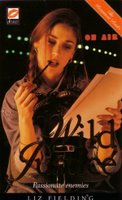A colleague responded to my use of the word “crucible” in my previous blog, saying that she’d never heard the expression. This sent me to one of my early notebooks where I knew I had made a note on the subject. Sadly, I didn’t make a note of the source, although I must have read it in one of the first how-to-write books I bought. I’ve loaned (and never got back) or given away a lot of these and I’m unable to check exactly where it came from, but this was the somewhat cryptic note I made –
Keep them in the "crucible".
Right...
The dictionary definition of a crucible is: "a vessel, usually of earthenware, made to endure great heat used for fusing metals, etc…"
In writing it is the situation which holds the H/h together, such as duty, marriage, prison, a journey, an institution, which is the crucible; a situation which neither of them wants but which, hopefully, through endurance -- and no doubt considerable heat! -- will, in time, forge an enduring bond.
Alongside that, and written at the same time so presumably from the same source:
Character: The Ruling Passion. Determined, well-motivated, wilful. What could the character do that is more ingenious, dramatic, surprising or funny?
I also found the following useful comments, which I wrote down after my first meeting with Charlotte Lamb:
Keep it simple.
Make certain that the cause of conflict is clear.
And after my first editor commented that a book I’d delivered was a bit “episodic”, I added this quote from Aristotle’s Poetics:
 “Of simple plots and actions the episodic are the worst. I call a plot episodic when there is neither probability nor necessity in the sequence of its episodes.” I added my own note to ram home the lesson: cause and effect. (The book, btw, was my second, A POINT OF PRIDE, if you want to judge for yourself
“Of simple plots and actions the episodic are the worst. I call a plot episodic when there is neither probability nor necessity in the sequence of its episodes.” I added my own note to ram home the lesson: cause and effect. (The book, btw, was my second, A POINT OF PRIDE, if you want to judge for yourself The notebook drew me in, reminding me of that first year as an “author”. There was the time-line I used for INSTANT FIRE, (book number three and reprinted last year) and notes of changes to the plot I made as I was writing. Window measurements (I only had one notebook!).
 Notes for a story that was eventually rejected as too plot heavy but which I later developed into a longer book, WILD JUSTICE, and sold as the first book of a trilogy. Phone numbers of the local newspapers and radio stations for publicity purposes; I was writing my fifth book before the first made it to the book shops.
Notes for a story that was eventually rejected as too plot heavy but which I later developed into a longer book, WILD JUSTICE, and sold as the first book of a trilogy. Phone numbers of the local newspapers and radio stations for publicity purposes; I was writing my fifth book before the first made it to the book shops. There were revision notes for early books. Ideas for stories – some of them never written; ideas for titles; lists of possible names. A “to do” list which included changing addresses for things such as house insurance, driving licences (we were also building a house – where did all that energy go?) Notes of the teachers I had to speak to at my daughter’s school open evening in that important pre-GCSE year (she’s now working on her MA while holding down a responsible job). There is no date in the book, but it was a momentous year, so I’m not likely to ever forget that it was 1992.

4 comments:
Hi Liz!
After reading this post I was doing a bit of googling on the topic of crucibles and amid all the hits for Arthur Miller's The Crucible" I came across this blog topic by Kathy Krajco, a freelance writer/editor:
Creating Conflict with a Crucible
http://www.operationdoubles.com/lighthouse-blog/2005/12/creating-conflict-with-crucible.html
Thanks, Heather! Glad I didn't just imagine it!
I'd be very intersted in getting hold of your Wild Fire books, Liz. Are they being reprinted?
I love this post--it's so brilliant to see an author at work.
Post a Comment